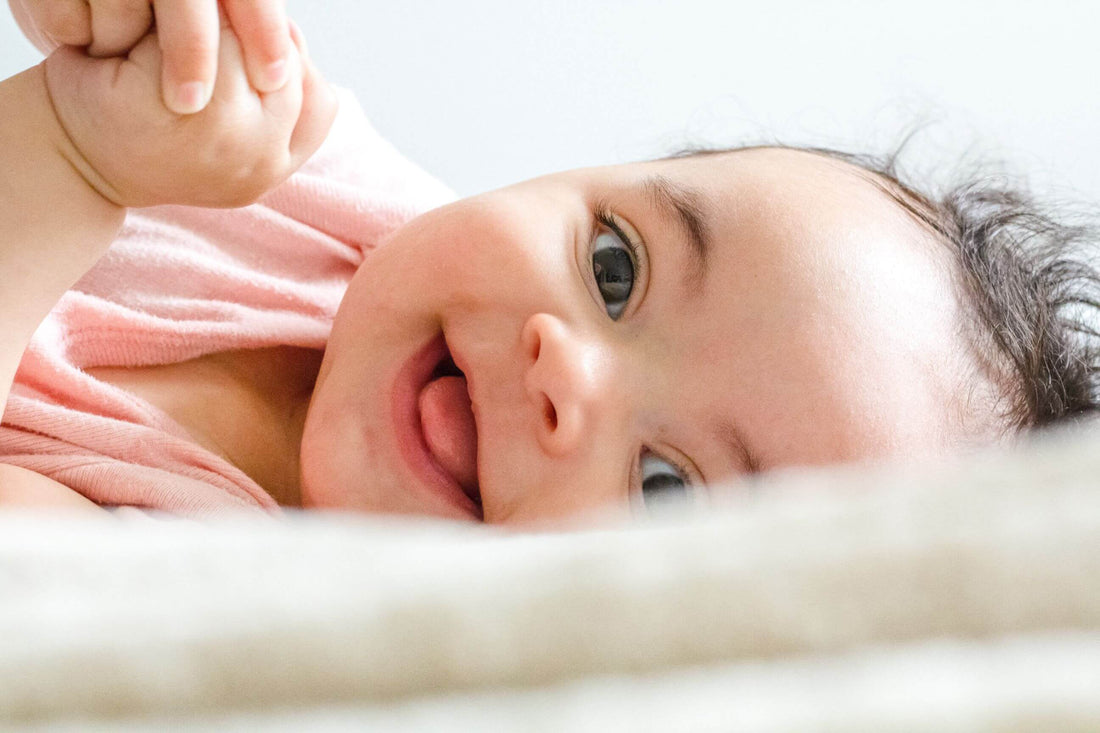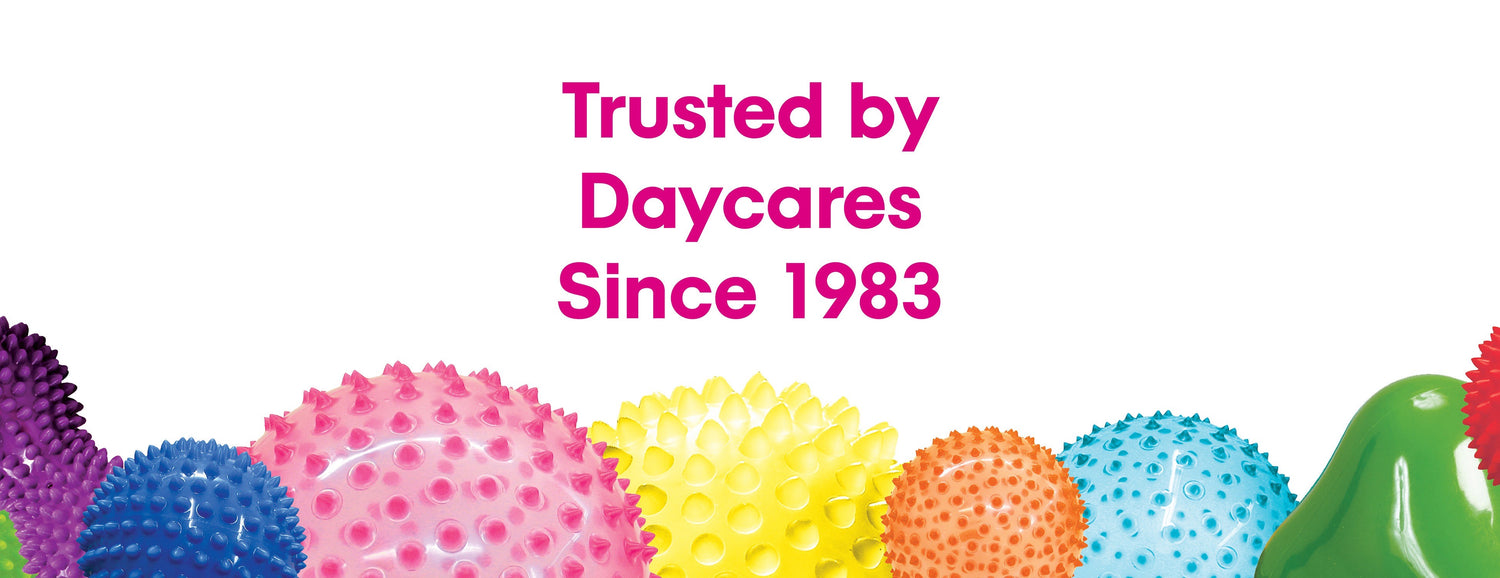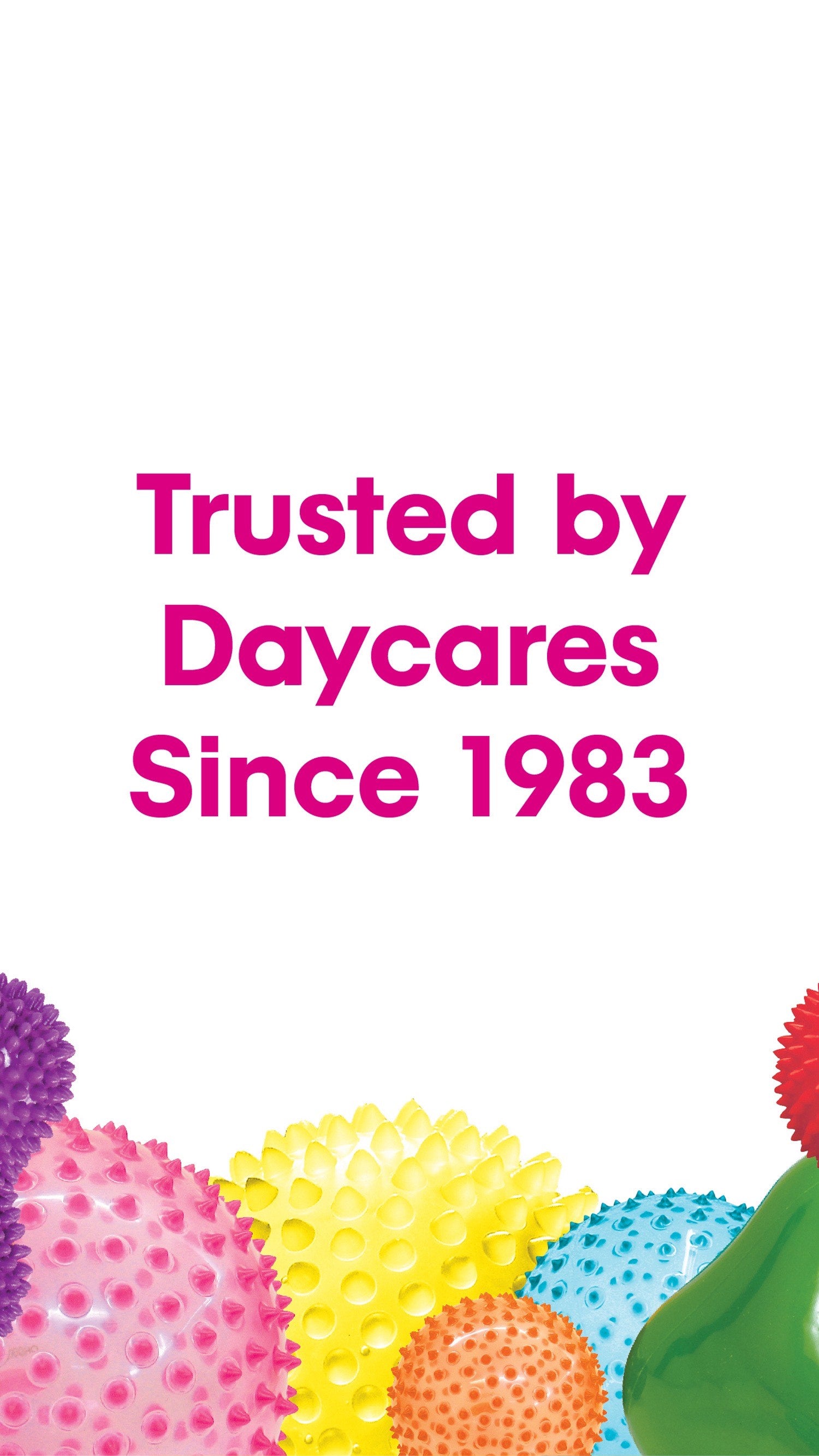The look in your child’s eye the first time they try ice cream. The smile on their face when they hear their favorite song. The wrinkle of their nose when they smell something yucky. The heat on their face when they go near an oven. The raise of their brow when they see something scary.
Some of the best, worst, and most important things in life are consumed, and learned, through our senses. Basically everything we do involves using one or more of them.
You may know the five basic human senses: touch, sight, hearing, smell and taste. But what many don’t know is that there are two other senses equally, if not more, important in our development. Many scientists even believe we have dozens more.
Every child is unique—and their senses are no different. Knowing the basics can help parents make sure they are correctly nurturing their children’s senses to support their own personal development. It can also help them identify situations where their child may need a little extra support with their sensory development.
What is a sense?
A sense is how people perceive and receive information about the world. You can’t live without them! For babies and children especially, they start to learn and discover their surroundings through engaging their senses.
There are mechanisms in our bodies that are responsible for each sense, and that send information to the brain. It’s a complex system of organs, tunnels, receptors, cells, and brain waves that work together to help us process what we’re experiencing.
What are the different types of senses?
There are five basic senses: touch, sight, hearing, smell and taste. However, two others, which are less talked about, are equally important in our child’s development: the vestibular system, which is responsible for balance, and proprioception, which is responsible for keeping us aware of what’s around us.
Unlike the five basic senses, which help us experience things outside our body and communicate it back to our brain, the vestibular system and proprioception let us receive information from inside our brain and then tell our bodies what to do on the outside.
Senses can be complicated, and everyone’s senses behave a bit differently—hence why some people enjoy certain foods or music, while others do not. Each sense also has a different purpose in our development, and in our enjoyment of and engagement with the world. For parents, it’s important to know and understand each one, so you can help nurture your child as they develop and look out for cues that they may need some extra support with sensory development.
Touch
Touch lets us feel and interact with the outside world.
Many experts believe the first sense we develop is touch. This is one of the reasons why skin-to-skin with your newborn is so important, for both bonding and engaging with their senses.
Skin is the sensory organ for touch. You have receptors all over your body in your skin that let you feel touch. When you touch something, or something touches you, your brain receives signals from those receptors that make you feel, and make your body move. Movement can be voluntary—like if a friend grabs your hand and you grab it back–or involuntary, like when something feels hot and you jerk away.
Touch can be used to show emotion, for example by giving a hug or a kiss. It also can influence how we make decisions. For a baby, if something feels soft, they may choose to cuddle with it. It’s also how we can teach lessons. If something feels hard, we learn not to throw it so we don’t break anything.
If a child is sensitive to touch, there are ways to support them. This can be in the form of teaching coping skills or finding ways to make their environment more comfortable. There are also professionals with experience supporting children that are sensitive to touch.
Sight
Sight lets us experience our world through our eyes. It’s an important way for children to observe and engage with the world around them.
Eyes are our sensory organs, and we use our eyes to engage our sense of vision and visual perception, which helps keep us aware of our surroundings.
The biology behind sight is complex. The most important thing to know is that sight lets us detect light and objects with our eyes. The cells in our eyes tell our brain what we’re looking at. Sight is how we know when it’s day and night–and when it’s time to sleep. Sight is also what can keep us from sleeping, especially if our sleep environment isn’t set up for success! For example, for babies with sleep issues, it may be because their room is too bright! The Smart Sleep Coach app is one tool that’s great for making sure your baby’s sleep environment doesn’t butt heads with their sense of sight.
A big part of learning is watching and observing what’s going on around us. Sight also helps keep us safe by letting us see danger.
Hearing
Hearing lets us experience our world through sound.
Sound is funneled through our ears, and the various vibrations from sounds travel to our brain for it to make sense of what we hear.
Hearing has many purposes—it’s how we enjoy music, stay alert to danger, and communicate with others. It also can at times be disruptive, like a honk of a horn or a baby crying. It’s also a huge part of how we communicate. Hearing is one of the main ways babies learn to talk.
Children that are sensitive to sound may need help with avoiding noises that make them uncomfortable, like wearing headphones if they need to be in a crowded space. They may also benefit from seeing a doctor who specializes in auditory issues.
Taste
Taste is the sense that lets us experience the world through flavor.
The sense originally was a method of survival. It would help make sure the food people were eating included proper nutrients, or wasn’t poisonous. Taste buds are considered our taste organ.
When we put someone in our mouth, information is transported from the tongue to the brain to tell us how it tastes. The basic tastes are sweet, salty, bitter, sour and savory. We all may perceive flavor slightly differently. So while one child may go crazy for avocado, don’t be surprised if it ends up on the floor every time you serve it to another!
Smell
Smell is the sense that lets us experience the world through scent.
Like taste, smell is also important for survival. It helps you figure out if a food is safe to eat, or if something dangerous, like fire or gasoline, is nearby.
Odors are airborne, and when they enter your nose or mouth they attach to cells that bring the information up to your brain. That’s where it decides if you like or dislike the scent.
Research shows that there could be trillions of different odors that humans can smell!
In addition to the practical reasons for smell, it’s also a great source of enjoyment. Nothing is better than the smell of freshly baked cookies.
Vestibular
Our vestibular sense is what allows us to move smoothly. It’s one of the two senses that come from the inside out.
It’s responsible for our balance and how we move in space. While the vestibular helps us with balance while we walk and run, it also helps us stay upright when we’re sitting or standing. We don’t always have to be aware of this sense, which is very helpful for doing all of the day-to-day things we may take for granted.
Surprisingly our vestibular sense comes from the inner ear! That’s where the receptors that tell our brain to stay balanced live. It uses fluid in our inner ear to help us keep tabs on our body’s position and movements. When babies first start walking and are a little wobbly, it’s because they are just starting to engage with this sense, and find their balance.
Children who are showing signs of vestibular issues can benefit from seeing a healthcare provider who specializes in the area.
Proprioception
Proprioception is the sense that lets us move our body without thinking about it.
When we walk up stairs, we don’t have to think about how high to lift our legs—that’s our proprioception sense. It’s also the sense that lets us touch our nose when our eyes are closed. The phrases “clumsy” and “uncoordinated” are related to proprioception.
Proprioception receptors are located in our muscles and joints. It has a lot to do with our coordination. When a new walker is still pretty slow, they are likely working through engaging with this sense, helping them move swiftly without overthinking about it.
Children who are showing signs of spacial awareness can benefit from seeing a healthcare provider who specializes in the area.
Why do senses matter in child development?
Developing and nurturing a child's senses is an important part of development. Children, and even adults, learn best and retain the most information when they engage their senses, because actively using our senses help build nerve connections in the brain’s pathway.
Sensory development also helps children become comfortable with the world around them. With many “new” things being introduced in the first few years of life, engaging their senses in a variety of environments and contents is key to supporting the social component of life.
Senses play both an emotional and physical role in children. They help them decide their preferences, engage with people using their emotions, and build relationships through communication. They also help them learn to walk or ride a bike, figure out if something is dangerous, and enjoy the pleasures that come with life.
Sensory play is a great way to start encouraging your children to engage their senses.
Engaging one’s senses isn’t the only way to support sensory development. Promoting healthy sleep habits is crucial for brain development and resting and nurturing our bodies. There are tools and trackers to help parents create healthy sleep routines for their children. The Smart Sleep Coach app is our favorite due to its automatic sleep schedule and guidance developed by pediatric sleep consultants and medical experts.



